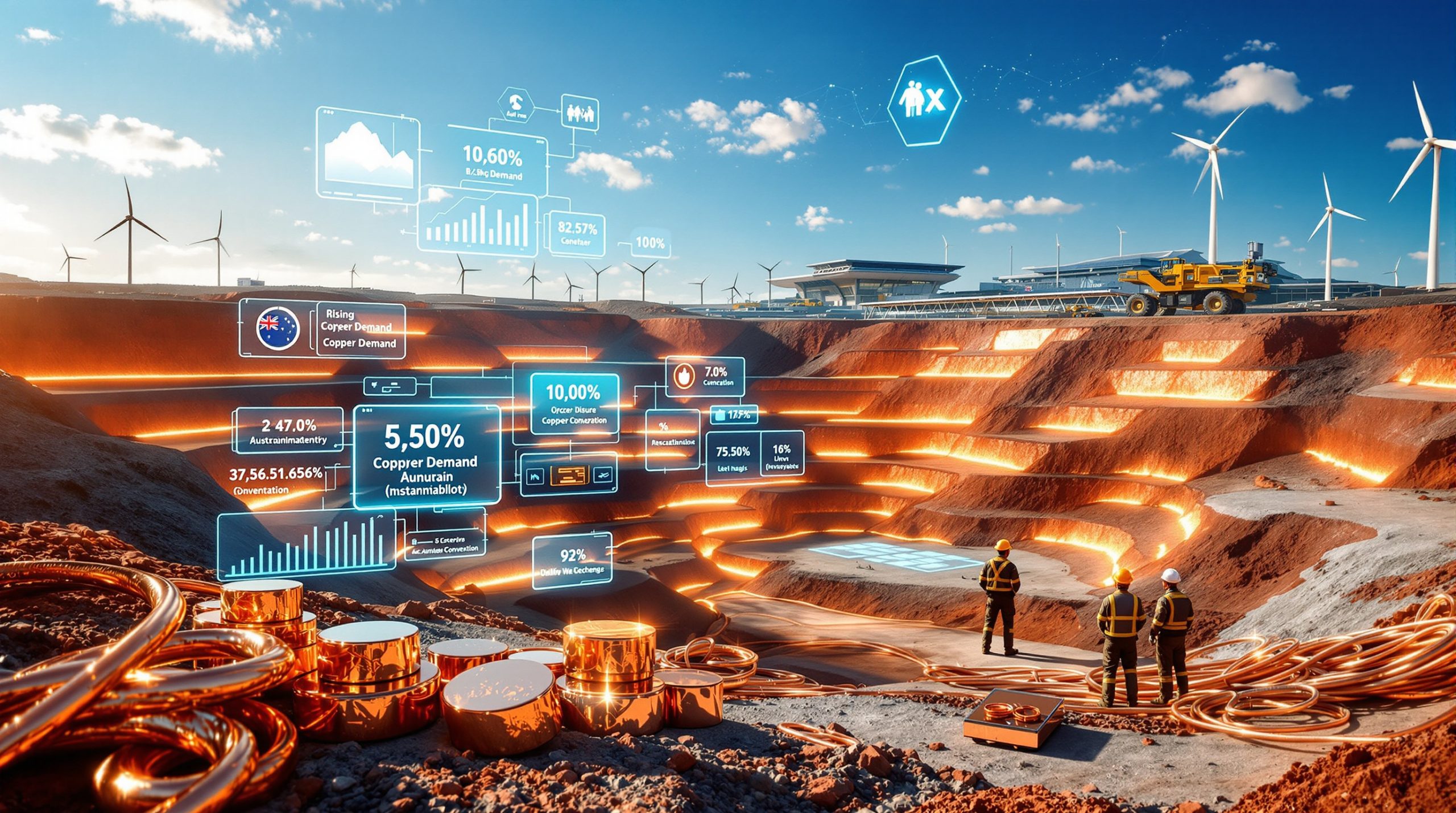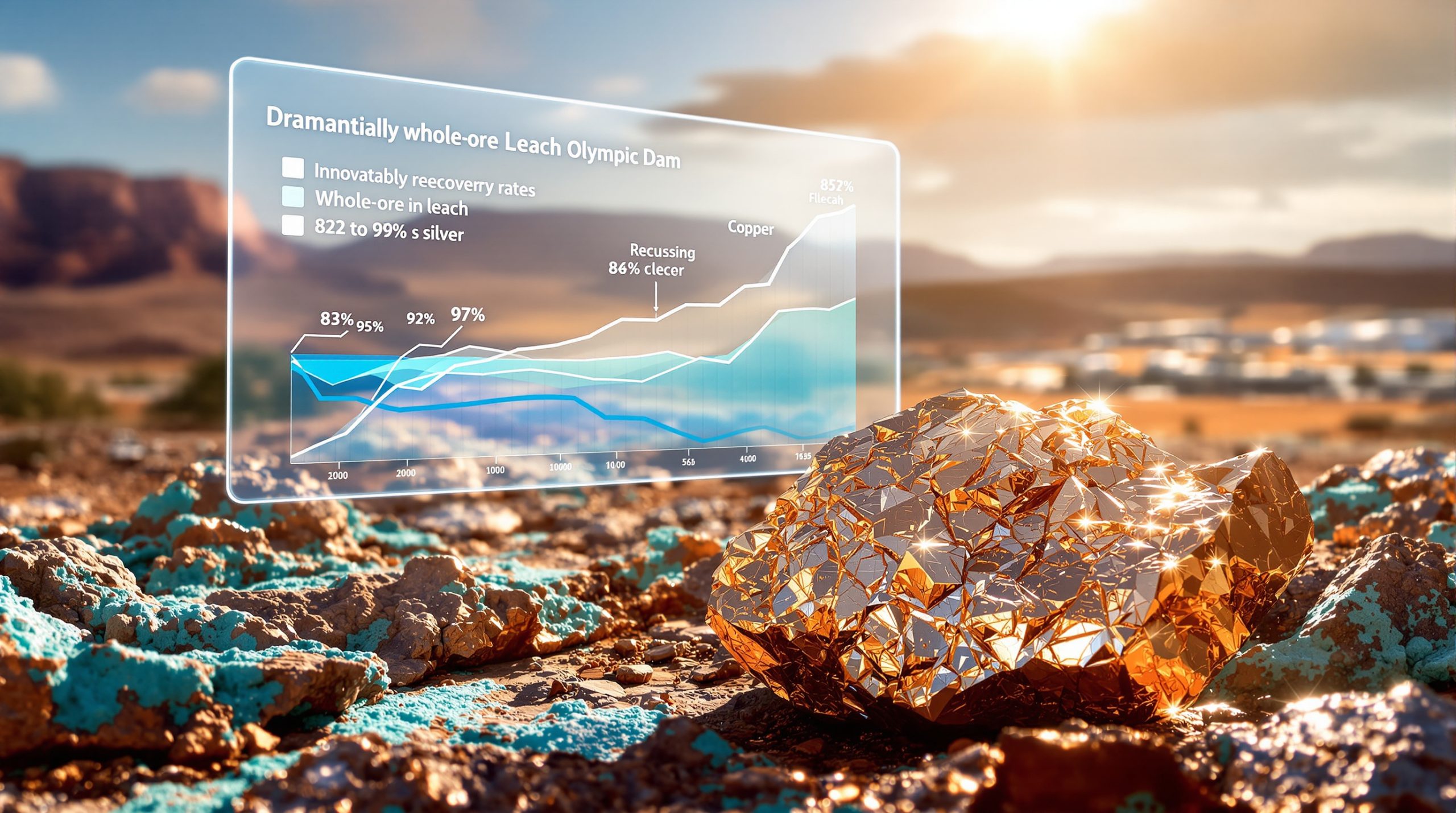What is the Copper to the World Conference?
The Copper to the World conference has earned its reputation as Australia’s leading international event dedicated to the copper sector. It brings together global mining executives, tech innovators, supply chain partners, and government decision‐makers. In addition, the event has become a vital forum for industry transformation.
South Australia plays a significant role in the country’s copper narrative, accounting for approximately 70% of Australia’s copper production (Department for Energy and Mining, 2024). This gives the Copper to the World conference a distinct edge by connecting global insights with deep local expertise. In 2025, industry stakeholders shared case studies and next‐generation technologies.
How Did the 2025 Conference Showcase Industry Innovation?
In 2025, the Copper to the World conference drew nearly 600 delegates spanning the entire copper value chain. Guided by the theme The Copper Advantage: Powering the Future, attendees experienced two action‐packed days of breakthrough presentations and innovative solutions.
Innovation Competition Highlights
Innovation Hour stood out as a focal point. The event highlighted advances pivotal to resolving key challenges. For instance, Titeline Drilling’s automated exploration drill illustrates copper exploration trends, reinforcing deep mining capabilities.
Banksia Minerals Processing impressed with its capital‐efficient chloride leaching technology. This approach can substantially lower processing costs. Furthermore, recent market studies such as copper price insights offer valuable perspectives on price movements.
These innovations work to close the widening supply–demand gap by offering scalable solutions for both greenfield and brownfield projects. In addition, they underscore the industry’s readiness to overcome emerging challenges.
Why is South Australia Positioned as a Global Copper Hub?
Copper mining is integral to South Australia’s history. The mid‑19th century discovery at Kapunda launched Australia’s first commercial copper mine. Consequently, the region has developed a robust industrial base that underpins innovative mining practices today.
Strategic Government Support
South Australia’s government drives a multi‐pronged strategy to cement the state’s global copper hub status. Key priorities include attracting international investment, accelerating technology adoption, supporting industry growth, and strengthening collaboration across sectors.
• Attracting international investment via targeted resource promotion and streamlined processes.
• Accelerating technology adoption through R&D partnerships and co‐investment initiatives.
• Supporting growth with transparent, risk‐based regulatory approaches.
• Strengthening collaboration between miners, METS providers, and research institutions.
Backed by world‐class reserves—over 70% of Australia’s copper resources are in South Australia (Geoscience Australia, 2023)—the region is home to globally significant districts. For example, Olympic Dam produces between 180,000 and 200,000 tonnes of copper annually (BHP Annual Report, 2023).
What Role Does BHP Play in South Australia’s Copper Industry?
During the 2025 conference, BHP Copper South Australia asset president Anna Wiley highlighted the company’s pivotal influence in shaping the state’s copper landscape. Her address detailed key initiatives spanning expansion and sustainability.
• Major Expansion Projects: Significant investment in infrastructure is underway to boost both immediate and long‐term copper output.
• Sustainability Commitments: BHP is enacting emissions reduction strategies and integrating renewable energy systems.
• Water Solutions: The company is planning long‐term strategies to improve water efficiency and secure alternative water sources.
• Local Procurement and Workforce Development: Enhanced engagement with local suppliers and upskilling initiatives are driving regional economic growth.
These strategic moves illustrate how large‐scale industry players are evolving operations for a lower‐emission, high‐efficiency mining environment.
What Technology Trends Are Reshaping Copper Mining?
New technologies are reimagining every aspect of copper production. From deep drilling innovations to automated supply logistics, the industry is setting new benchmarks in productivity and safety. In addition, firms are increasingly embracing cutting‑edge systems that enhance operational performance. For further scheduling updates, see conference details.
Advanced Safety Systems Driving Productivity
Sandvik’s automation lead explained that collision‐avoidance systems are transforming underground safety. These systems improve situational awareness, reduce accident risks, and lower equipment repair costs.
• Improved Safety: Operators now benefit from real‑time hazard detection.
• Cost Efficiency: Lowered repair and maintenance expenses are achieved.
• Streamlined Operations: Enhanced traffic and equipment routing in confined spaces.
• Boosted Productivity: Increased ore‐to‐waste ratios through process optimisation.
A recent study detailed in the US copper production overview further explains these benefits.
Predictive Maintenance and Decision Intelligence
Predictive maintenance powered by IoT sensors and machine learning has become central to operational reliability. Early fault detection and lower emergency repair costs combine to create a more efficient production environment. Furthermore, Rio Tinto’s use of decision intelligence integrates advanced analytics with operator knowledge to drive continuous process optimisation.
Innovation Hour: A Closer Look
Key solutions showcased during Innovation Hour included automated drill rigs for deep resource access and capital‑efficient chemical processing routes. These innovations address challenges such as increasing ore body depth, processing lower‐grade ores profitably, and reducing energy consumption.
What Supply Challenges Face the Global Copper Industry?
A core theme in 2025 was aligning copper supply with surging global demand. Energy transition initiatives require vast copper volumes for electric vehicle batteries, power grids, and green infrastructure. Additionally, a global copper supply forecast sheds light on the critical supply trends.
Critical Bottlenecks
Speakers detailed several challenges including lengthy project development cycles exceeding 15 years, declining ore grades, and rising execution risks. These issues are compounded by skill shortages, supply chain disruptions, and water scarcity.
• Regulatory delays: Extended permitting processes prolong time to production.
• Lower ore grades: Increased processing challenges and costs.
• Supply chain disruptions: Equipment and material delays hamper progress.
• Water limitations: Constrained access hinders expansion.
Moreover, recent analyses and discussions highlight the importance of clear project pipelines to sustain investor confidence, as outlined by emerging copper investment strategies.
Market Psychology and Investment Dynamics
Investor risk aversion is on the rise, driven by long development cycles and regulatory unpredictability. Transparent government support and a robust project pipeline are essential to restoring confidence. Additionally, comprehensive event resources such as the industry event guide offer valuable insights into market trends.
Industry leaders consistently warned that relying solely on past expansion cycles may leave the supply deficit unresolved in the next decade.
Disclaimer: Future production scenarios and prices remain subject to market fluctuations, regulatory changes, and unforeseen geopolitical factors.
How is Sustainability Shaping Copper Production Methods?
Sustainability was a central focus at the event. Mining companies are increasingly integrating environmental stewardship into their core strategies by investing in water reduction and advanced waste management practices.
Water Management Innovation
Rio Tinto’s trial of a dry stack tailings test bed is paving the way for improved water management. This technology has led to significant cuts in fresh water usage and the development of safer tailings storage facilities.
• Reduced water usage
• Safer tailings storage
• Enhanced water recycling
Renewable Energy Integration
Renewable energy integration was another headline theme. Panels discussed the deployment of photovoltaic solar, wind farms at mine sites, and battery energy storage systems that ensure 24/7 clean energy coverage.
• Clean energy deployment
• Electrification of heavy equipment
• Long‑term power agreements
These renewable measures not only meet environmental regulations but also shape market preference, as buyers increasingly demand robust carbon accounting and traceability.
What Makes the Exhibition Floor a Key Conference Component?
Outside the main sessions, the exhibition floor buzzed with activity. Live demonstrations, interactive booths, and displays bridged theory with practical application, enabling real‑time technology adoption and accelerated operational improvements.
• Live demonstrations showcasing advanced mining and processing tools.
• Networking opportunities connecting suppliers with end users.
• Technology showcases that translate innovation into operational benefits.
• Partnership formation between equipment manufacturers, tech startups, and established miners.
This dynamic setting facilitated immediate product discovery and collaborative problem‑solving throughout the copper value chain.
How Does the Conference Foster Global Collaboration?
Global collaboration emerged repeatedly as a vital theme. The event broke down traditional silos and catalysed cross‑sector partnerships among miners, tech providers, government agencies, and academic institutions.
Cross‑Sector Partnerships
Participants formed new alliances by partnering with tech suppliers to trial innovative exploration and processing methods. Government bodies and academic institutions joined forces to streamline research and regulatory support.
Knowledge Transfer and Shared Learning
Interactive workshops and panel Q&As supported a rich exchange of insights. Experts shared practical lessons, case studies, and regulatory updates, bridging the gap between theory and application with tangible outcomes.
What Future Developments Can the Copper Industry Anticipate?
Dialogues at the conference signalled several key directions. Accelerating technology uptake and adapting to evolving market dynamics remain top priorities as digital transformation streamlines planning and reduces operational risks.
• Autonomous systems: Widespread adoption in both surface and underground operations.
• AI‐driven optimisation: Enhancing plant control and financial forecasting.
• Remote control centres: Centralised management of multiple assets.
• Digital twin modelling: Minimising risk in expansion and investment decisions.
Investment trends and market dynamics continue to guide the sector’s strategic capital allocation.
| Anticipated Development | Impact Area | Timeline (Estimated) |
|---|---|---|
| AI‐driven mine optimisation | Processing efficiency | 1–3 years |
| Widespread renewable integration | Emissions, cost | 2–5 years |
| Vertical supply chain integration | Investment, supply | 3–7 years |
| Digital twins for planning | Risk, CapEx/Opex Savings | 2–4 years |
Disclaimer: Projections and timelines above are informed by current market trends and subject to change.
When and Where Will the Next Conference Take Place?
Copper to the World 2026 is set to return to the Adelaide Convention Centre from September 2–3, 2026. Building on this year’s momentum, the event promises continued international expansion and a focus on scalable, innovative solutions.
For further event insight, please visit the industry event guide.
Conclusion: Why Copper to the World Matters
Copper to the World is far more than a regional convention. It is a strategic hub for the international copper community, uniting supply security with sustainable progress and pioneering green innovation.
As electrification accelerates, copper remains central to modern infrastructure, clean energy, and transportation. The event’s optimistic spirit underscores how stakeholders tackle challenges through partnership, ingenuity, and responsible stewardship.
Conference evolution mirrors copper’s transformation from an industrial staple to a linchpin of green progress. This synergy between tradition and modernity ensures a robust future for the industry.
Further insights on industry trends can be found at Australian Mining magazine.
Want to Capitalise on the Next Major Copper Discovery?
Stay ahead of the market with real-time alerts on significant ASX copper discoveries through Discovery Alert's proprietary Discovery IQ model, which transforms complex mineral data into actionable investment insights. Understand why historic discoveries can generate substantial returns by visiting the Discovery Alert discoveries page and begin your 30-day free trial today.




